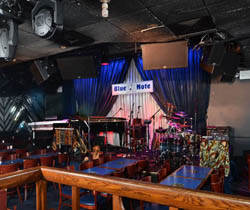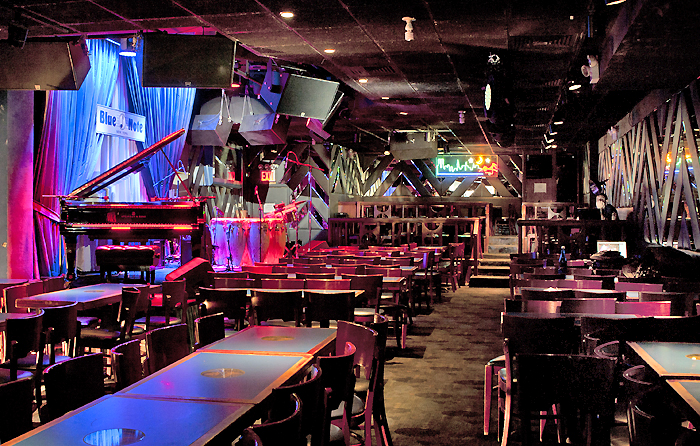
Using them as the building blocks of his new system, they performed for the next 23 years without failure, eventually passing the torch to another system in a version 2.0 upgrade performed once again by Peleg earlier this year, this time under the auspices of his contracting firm, Peltrix.
“The self-powered SA loudspeakers did an incredible job right up until the moment we switched on the new system this year,” Peleg says. “Consider, too, that the amplifiers in those loudspeakers incorporated computer control. This before even Crown’s IQ System was unveiled.
“We had a (Windows) XT 286 PC in the rack – the computer of choice at the time – and were running proprietary networking software called SA Net,” he continues. “We basically could do everything you can do now with computer control then.”
Balancing Act
Still sold on the ribbon HF concept, Peleg initially began working in 2005 with Garth Showalter of SLS Audio to bring Blue Note audio into the 21st century. The two turned the Blue Note into a living laboratory when given the chance, testing vertical arrays of steerable columns (flown horizontally) used with combinations of fill loudspeakers and various formulas for delay.
While amazingly precise, the steerable arrays were difficult to position – holes in coverage emerged because of too much cancellation. The steerable array idea was eventually let go, heralding a return to an update of what is basically the original Peleg design.
Based around seven SLS 115RT-I 2-way loudspeakers suspended above the stage on custom-made mounts from Massachusetts-based Polar Focus, the latest Blue Note audio blueprint adds three smaller SLS cabinets (model 8190Tv2-I) above the stage, another 115RT-I firing from further into the audience at stage left into an alcove that includes the sound booth, and a pair of SLS 112RT-I loudspeakers mounted well off of stage right aimed into the bar area.
“Because of the room’s small size and configuration,” Peleg explains, “one of the main concepts you have to grasp in order to truly understand how this system works is that it’s used mainly to give balance to the sound coming off the stage.”
To reach this harmony between what’s reinforced and what’s naturally arising from the stage, Peleg divided the club into three separate zones for mixing, each of which takes into consideration where members of the audience are in relation to the instruments onstage.
Due to the positioning of the stage, stereo imaging isn’t possible, but each zone can be mixed to give a full and accurate representation of the music being made using the appropriate loudspeakers for that zone.
To obtain this equilibrium, the house mix engineer walks around within the different zones, remotely making adjustments via an iPad running Yamaha’s StageMix App that offers access back to 31 channels at the house’s Yamaha M7CL-48ES digital console (Channel 32 is used for an announcement mic.)


